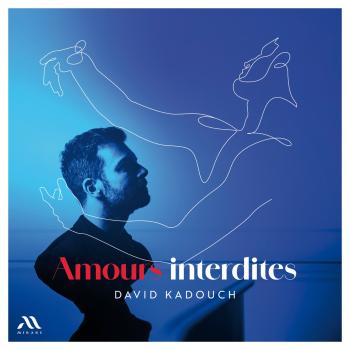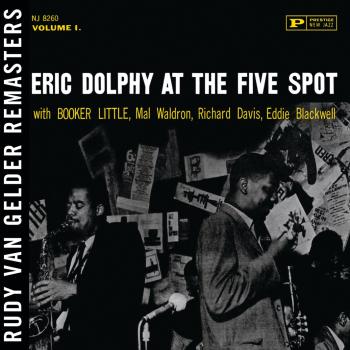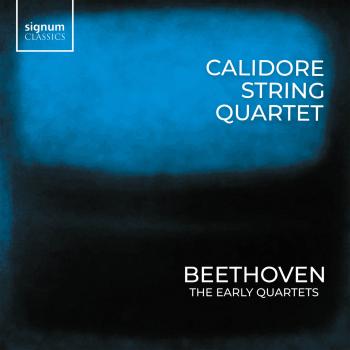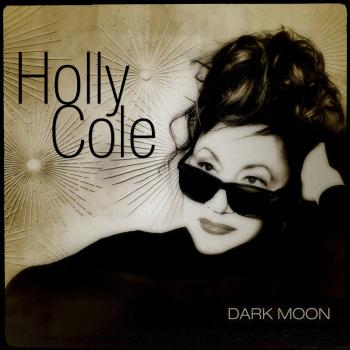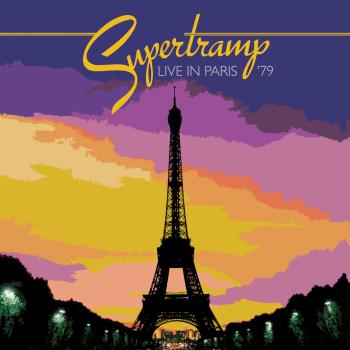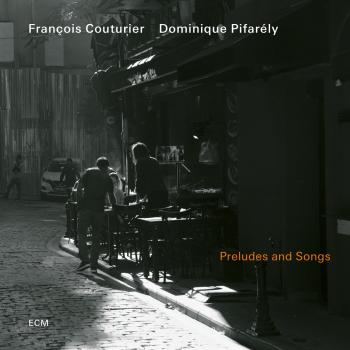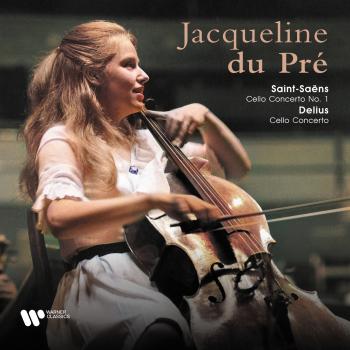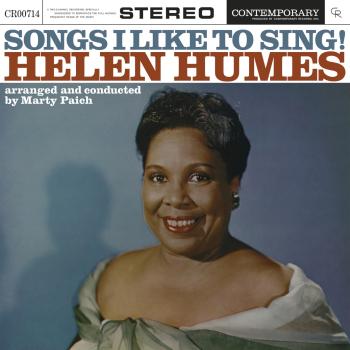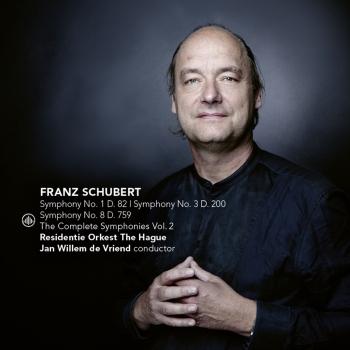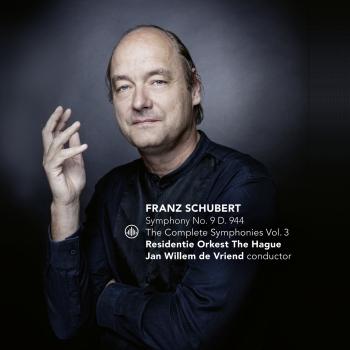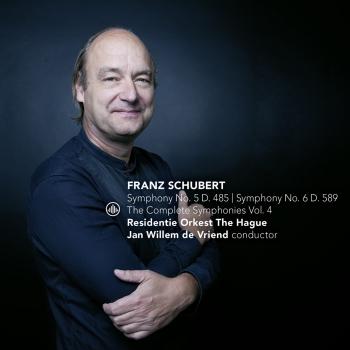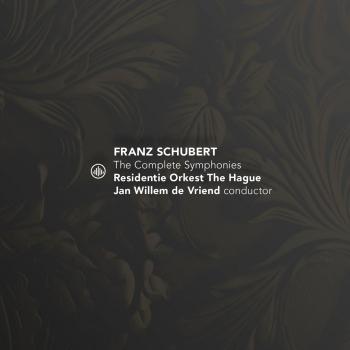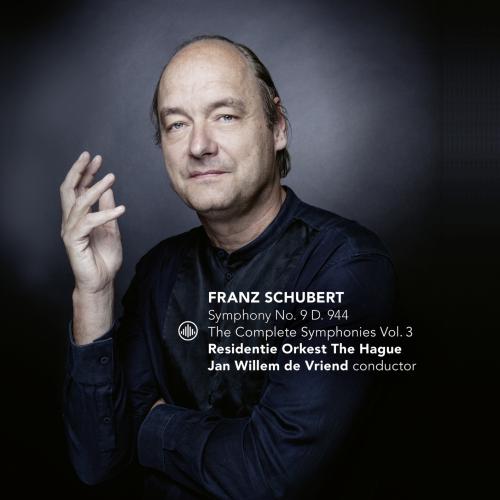
Schubert: The Complete Symphonies Vol. 3: Symphony No.9, D.944 Residentie Orkest The Hague & Jan Willem de Vriend
Album info
Album-Release:
2020
HRA-Release:
06.10.2020
Label: Challenge Classics
Genre: Classical
Subgenre: Orchestral
Artist: Residentie Orkest The Hague & Jan Willem de Vriend
Composer: Franz Schubert (1797–1828)
Album including Album cover
I`m sorry!
Dear HIGHRESAUDIO Visitor,
due to territorial constraints and also different releases dates in each country you currently can`t purchase this album. We are updating our release dates twice a week. So, please feel free to check from time-to-time, if the album is available for your country.
We suggest, that you bookmark the album and use our Short List function.
Thank you for your understanding and patience.
Yours sincerely, HIGHRESAUDIO
- Franz Schubert (1797 - 1828): Symphony No. 9, D. 944:
- 1 Symphony No. 9, D. 944: I. Andante — Allegro, ma non troppo — Più moto 14:54
- 2 Symphony No. 9, D. 944: Andante con moto 13:05
- 3 Symphony No. 9, D. 944: III. Scherzo. Allegro vivace — Trio 14:00
- 4 Symphony No. 9, D. 944: IV. Allegro vivace 15:08
Info for Schubert: The Complete Symphonies Vol. 3: Symphony No.9, D.944
Schubert composed his first five symphonies while still a teenager, but they represent just one facet of his prodigious fluency. At this time some of his musical ideas bear a family resemblance to certain themes from Mozart, Haydn and Beethoven, but already his own musical character is evident. He began his Second Symphony in December 1814 and had finished it by March 24th of the following year. He completed the Fourth Symphony in about three to four weeks during April 1816. We should not read too much into the Fourth Symphonys Tragic appendage, added by Schubert as an afterthought. It may be merely an example of the flippant comments which he wrote on some of his youthful scores, but nevertheless the symphony has more gravitas than its predecessors. Schubert also includes a second pair of horns to enrich the texture. Actually, this is the only piece of non-programmatic music to which he gave a descriptive title. After completing the symphonic cycles of Beethoven and Mendelssohn, Jan Willem de Vriend now undertakes Schuberts complete symphonic output. This is the first volume in that series.
While offering little suggestion of the symphonic mastery he would attain less than a decade later, the First Symphony, influenced by Mozart’s last symphonies and completed in October 1813, is a remarkable achievement.
Schubert composed his Third Symphony over a period of about two months, completing the work in July 1815. The Third Symphony is generally characterised by an increased rhythmic intensity, at times bordering on obsession. We may well think of Schubert primarily as a wonderful melodist, but driving, sometimes overpowering rhythm is just as strong a feature of many of his greatest works.
The question of why Schubert left this B minor symphony unfinished has continued to exercise scholars. The most convincing explanation is that he simply found himself unable to continue on the same exalted level and resigned himself to leaving the symphony as it was – two movements of breath-taking quality and imagination. There is no evidence that he ever wished, in his remaining six years, to return to the work, or that he regarded it as “unfinished”. Beethoven's influence on the historic development of the symphony was staggering. His own examples, widening the expressive range of the genre, opened up a new world. Against this background, Schubert conceived a work of much greater poetry, drama and profundity than he had attempted in his previous symphonies.
Over-familiarity may well have blunted our appreciation of this symphony, which is strikingly original from almost every aspect. Apart from the concentrated, expressive quality, there is also a greatly enhanced sense of tone-colour, with much richer sonorities, and a new spaciousness.
Residentie Orkest The Hague
Jan Willem de Vriend, conductor
Jan Willem de Vriend
Since 2015-2016 Jan Willem de Vriend is appointed as principal conductor at Het Residentie Orkest of The Hague and principal guest conductor at the Orquestra Simfonica de Barcelone i Nacional Catalunya. Between 1982 and 2015 De Vriend was artistic director and violinist of the Combattimento Consort Amsterdam, established by himself. This ensemble excelled in known and especially unknown masterpieces of the 17th and 18th century and belonged to the forefront of Dutch classical music. It achieved a huge succes abroad as well; starting off with their own series in the Concertgebouw Amsterdam, it toured around the world. Also remarkable were the opera productions the ensemble accomplished, based on works by Monteverdi, Handel, Telemann, Bach, Gassmann and Mozart among others. With these operas, directed by the much-acclaimed Eva Buchmann, tours have been organised throughout Europe and America. A pile of cd’s, dvd’s and tv-recordings exists to document this very productive and intense period, which De Vriend continues from now on as full-time conductor and in his many roles as charismatic promotor of classical music.
From 2006 up to 2018 Jan Willem de Vriend was chief conductor at Het orkest van het Oosten, formerly known as Het Symfonieorkest. Right at the start of his appointment in 2006 as artistic director and chief conductor at Het Symfonie Orkest, he attracted attention with a striking performance of Mahlers first symphony, in the first, so-called ‘Hamburger version’. The rave reception (Absolutely a must – The Grammophone) resulted in invitations by the Amsterdam Concertgebouw Orkest as well as many orchestras abroad. Again with Het Symfonie Orkest he completed a very successful series, recorded on cd, of all of Beethovens symphonies. A new series is planned with Mendelssohns symphonies, unjustly rarely performed according to De Vriend. He already recorded his 3rd and 4th symphony on dvd with the Belgian director Pannekoek: a fascinating mix of popclip and classical music.
De Vriends great knowledge of and unstoppable enthusiasm for classical music also resulted in the tv series ‘De Vriend and his heroes’ in 2013/14, followed by ‘Music and mechanism’ and ‘Music and power’ in 2015, all in collaboration with Het Symfonie Orkest. As chief conductor in Enschede he made productive as well his lifelong fascination for and experience with opera. In 2013 and 2014 the orchestra was invited to Sankt Moritz/Basel to perform respectively the Don Giovanni and La Gazetta by Rossini, both with a stage direction by Eva Buchmann. In 2015 Don Giovanni was successfully performed six times in the Netherlands. In addition Jan Willem de Vriend since 2008 worked as guest conductor at Het Brabants Philharmonisch Orkest.
Besides he conducted the Konzerthaus Orchester Berlin, NDR Orchester, Philharmanie Stuttgart, WDR Orchester, in Hong Kong, Luxemburg, Barcelona and at Het Koninklijk Concertgebouw Orkest. He conducted opera in Swetzingen, Luzern, Straatsburg and Barcelona. For the near future concerts and recordings are scheduled, of course with Het Symfonie Orkest in Enschede, Het Residentie Orkest in the Hague and the Orquestra Simfonica de Barcelona I Nacionalde Catalunya. But also with Het Koninklijk Concertgebouw Orkest. He is also invited in Berlin (Konzerthaus Orchester), Zurich (Tonhalle), at Bergen Philharmonic and the National Orchestra of Flanders. In 2012 Jan Willem de Vriend won the prestigious ‘Radio 4 Prize’ for his undefatigable promotion of classical music.
This album contains no booklet.

